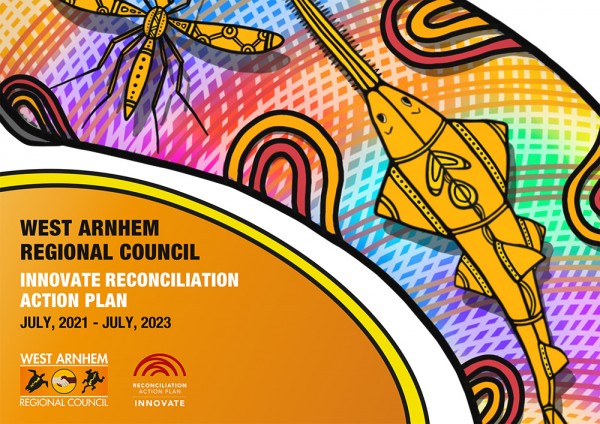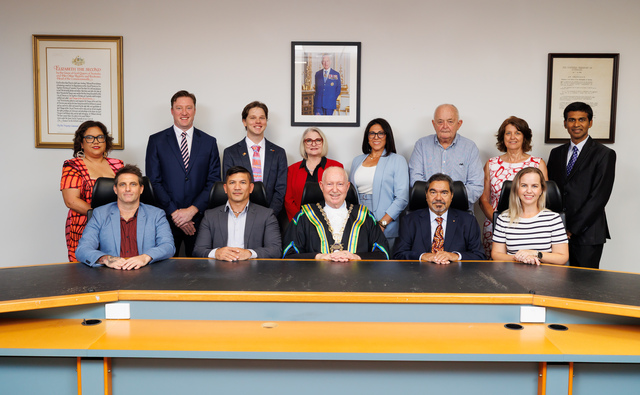West Arnhem Regional Council (WARC), Northern Territory, is celebrating a significant milestone in the journey towards reconciliation following the launch of its first Reconciliation Action Plan.
In what was a momentous beginning to NAIDOC Week 2021, staff across the six West Arnhem office locations joined together to celebrate the ‘Innovate’ Reconciliation Action Plan launch on Monday, 5 July 2021.
The plan shares a strong vision to champion meaningful consultation and improve relationships with First Nations Peoples based on integrity, respect, relationships and opportunities; to deliver beneficial outcomes for the West Arnhem region.
With more than 55 percent of Council’s team identifying as Aboriginal and Torres Strait Islander Peoples, developing the Reconciliation Action Plan was a fundamental step towards achieving the goals of the organisation together, by walking in both worlds.
Mayor, Matthew Ryan said the document was significant from cover to cover, and reflected 12 months of sharing stories of reconciliation with staff and the people living in the Aboriginal Lands of Kakadu and West Arnhem.
“It has been a long time coming, and now we are here with a Reconciliation Action Plan we are extremely proud of.
“This is a strong beginning for our ongoing journey and commitment to reconciliation.”
The artwork embedded in the Reconciliation Action Plan document are images developed by artist Shaun Lee which were inspired by each West Arnhem community.
‘Ngalyod’ (rainbow serpent), which is regarded as an important ancestor spirit in West Arnhem Land, is also featured prominently in the artwork.
Reconciliation Australia Chief Executive Officer, Karen Mundine, said the Reconciliation Action Plan, “Signals West Arnhem Regional Council’s readiness to develop and strengthen relationships, engage staff and stakeholders in reconciliation, and pilot innovate strategies to ensure effective outcomes.”








